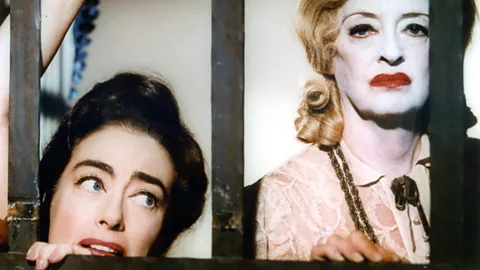How What Ever Happened to Baby Jane? demonised older women
 Alamy
AlamyThe Bette Davis/Joan Crawford film led to a sub-genre of "Hagsploitation" horror featuring seasoned female stars as villains – but did this benefit or demean them, asks Thomas Hobbs.
"I wouldn’t give you one dime for those two washed-up old..." barked Warner Bros' president Jack Warner at the director sitting on the other side of his marble desk. But Robert Aldrich persisted, eventually charming the studio shark into coughing up a meagre budget so he could direct What Ever Happened To Baby Jane?.
Aldrich's 1962 Hollywood adaptation of Henry Farrell's gothic novel would star Bette Davis and Joan Crawford, both then in their mid 50s, as quarrelling sisters, confined to the living tomb of a Los Angeles mansion that's filled with skeletons and a noxious resentment that lingers in the air. On paper it was an obvious risk for Warner, especially in an era where ageism and sexism led to most women in Hollywood being deemed fit for the scrapheap by the age of 45.
 window._taboola = window._taboola || [];
_taboola.push({
mode: 'alternating-thumbnails-a',
container: 'taboola-below-article',
placement: 'Below Article',
target_type: 'mix'
});
window._taboola = window._taboola || [];
_taboola.push({
mode: 'alternating-thumbnails-a',
container: 'taboola-below-article',
placement: 'Below Article',
target_type: 'mix'
});